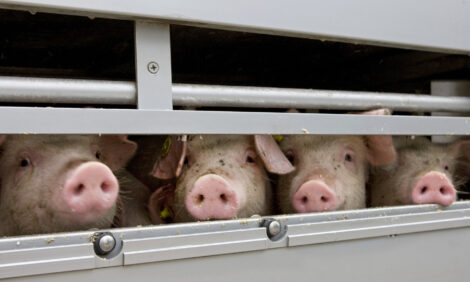Smallest Farms Are Fastest Growing Group in Nebraska
NEBRASKA - While the numbers of very large and very small farms in Nebraska are steadily increasing, farms spanning the gap between these extremes are getting harder to find, a University of Nebraska-Lincoln agricultural economist said.
|
Need a Product or service?
|
|
 This dichotomy recently has become more pronounced, Glenn Helmers said. The university Institute of Agriculture and Natural Resources ag economist analyzed preliminary data from the U.S. Department of Agriculture's 2002 Census of Agriculture. The agricultural census defines very small farms as those with annual sales of under $2,500 and very large farms as those having more than $500,000 in annual sales.
This dichotomy recently has become more pronounced, Glenn Helmers said. The university Institute of Agriculture and Natural Resources ag economist analyzed preliminary data from the U.S. Department of Agriculture's 2002 Census of Agriculture. The agricultural census defines very small farms as those with annual sales of under $2,500 and very large farms as those having more than $500,000 in annual sales.
"There are increasing demands for large and small farms with the middle sort of being damaged," Helmers said, referring to shifts in farm numbers.
Farms with sales under $2,500 annually are the fastest growing category of Nebraska farms, according to the census. They now account for 20 percent of farms in the state, up from 13 percent in 1997. To be defined as a farm, an enterprise must gross at least $1,000 annually.
This smallest farm class probably includes enterprises such as small sweet corn acreages, farms that raise produce for farmers' markets and some part-time or hobby farms, he said.
Farms with more than $500,000 in annual sales were the only other sales classification to increase from 1997-2002. However, they still represent a small percentage of Nebraska farms overall. The number of these largest farms grew to 5.7 percent of all farms in 2002, up from 4.7 percent in 1997. The number of farms in the six sales classifications in between the smallest and largest decreased by 18.5 percent during the period.
Despite these shifts, farms with sales of $100,000 to $500,000 annually remain the most common in Nebraska. In 2002, these farms made up about 26 percent of all Nebraska farms, down from about 29 percent in 1997.
One explanation for growth trends, Helmers said, may be the increasingly common view of farming as a part-time occupation in addition to another job. That job may be held by the farm operator or the spouse. In some cases, both the farm operator and the spouse may have part- or full-time non-farm jobs.
"I think many farmers, especially those who live outside cities like Lincoln or Omaha or other cities with opportunities, find they can do both," Helmers said.
Ag census figures show Nebraska farmers are roughly split between those who work off the farm and those who don't.
At the other end of the spectrum, continuing economic pressures prompt many farmers to expand, Helmers said. These large farms often are multi-family operations that include a producer's extended family in the business.
"Often an older farmer brings his family into the operation and they accumulate more rental or owned land," Helmers said. "In a sense, it's still a family farm."
About 73 percent of Nebraska farms supported one household while net income from the rest was shared between two or more households, he said.
Farmers also are living longer. This longevity emphasizes the multi-generational farming enterprise as farmers retire older and younger family members join the family operation, Helmers said.
He expects the overall number of farms in the region to continue declining even as more farms join the smallest and largest sales categories.
Source: University of Nebraska, Lincoln - 25th May 2004




 This dichotomy recently has become more pronounced, Glenn Helmers said. The university Institute of Agriculture and Natural Resources ag economist analyzed preliminary data from the U.S. Department of Agriculture's 2002 Census of Agriculture. The agricultural census defines very small farms as those with annual sales of under $2,500 and very large farms as those having more than $500,000 in annual sales.
This dichotomy recently has become more pronounced, Glenn Helmers said. The university Institute of Agriculture and Natural Resources ag economist analyzed preliminary data from the U.S. Department of Agriculture's 2002 Census of Agriculture. The agricultural census defines very small farms as those with annual sales of under $2,500 and very large farms as those having more than $500,000 in annual sales.













